PERFORMED CITY
Public Line of Action
Performed Installation + Performances, 2014
Happenings
bring forth cultural performance processes of democratic negotiation. Characteristic of this phenomenon is the act of participation. The audience decides whether and to what extent they wish to engage. Through offers or invitations to act, an aesthetic space of possibility is created, in which social (outward) actions can be experimented with—actions that extend beyond everyday experiences—and thus have the potential to sensitize, activate, and emancipate. (cf. Allan Kaprow, 18 Happenings, Patricia Hoeppe, Performed City, p. 256)
[The Public Line of Action]
This is the third part of the methodology PERFORMED CITY: The ©Public Line of Action is the performing of a good together by all citizens in the real public city space as an every-day-life-performance. In the ©Citizens Happening methods of instructions, operative settings, involvement, implementation and forms of settling and negotiation are initiated.
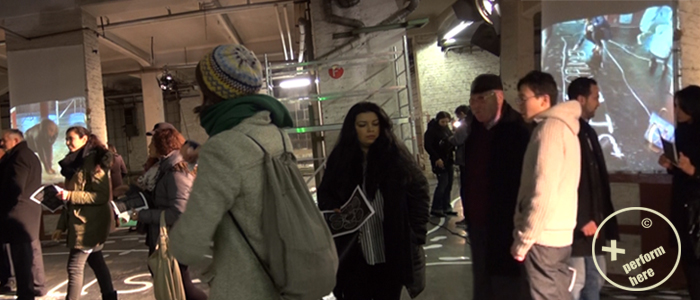
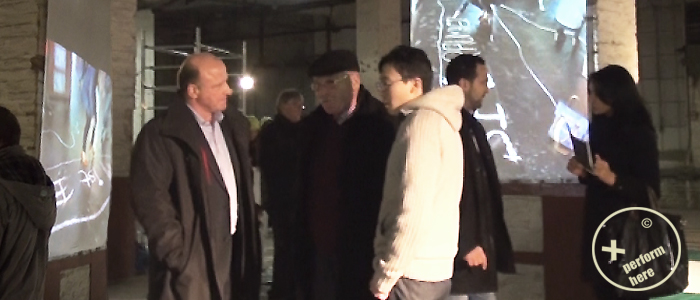
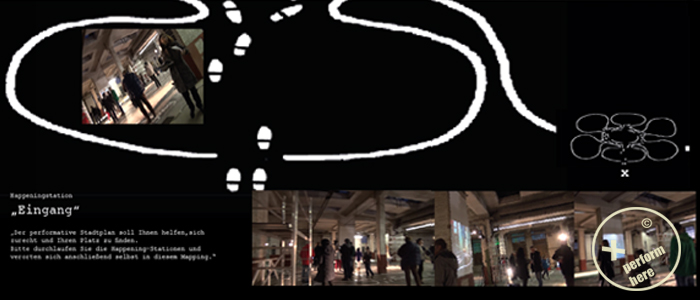
[Citizen Happening]
For this Citizen Happening/ Performed City, a mapping was installed on the floor of a factory hall, featuring various stations that represent the outcomes of the 1. and 2. Lines of Actions: democratic centrality and framing, free access to negotiation stations, etc. At the different stations of the Happening citizens, as participants, were able to experience and re-perform the effects of the socio-artistic performances, which had been specifically developed and implemented for their city. In conclusion, each citizen was invited to create their own participatory proposal for their city—one that could be enacted as a performer of democratic culture within their real city (cf. Performed City).
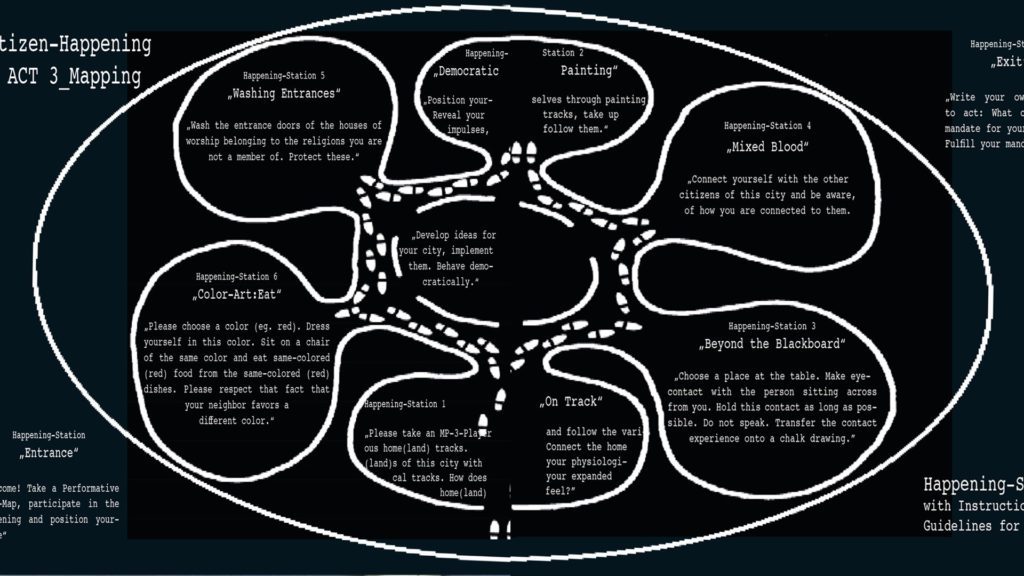

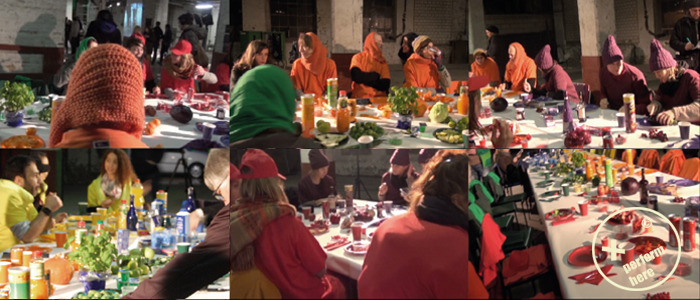
[Citizen Happening color-art:eat]
Since antiquity, food culture has been associated not only with social status, political and religious power, but primarily with cultural identification. The sociology of food and Haute Cuisine are considered to be among the most creative acts of human expression. The cultural anthropologist George Simmel observes how shared meals „transform the previously hostile stranger into a friend,“ thereby creating a community in which, not least, citizens perform an open artwork with the color and arrangement of the table setting.
[Performed City]
A small town near Frankfurt (15,000 residents) is in a state of ongoing conflicts caused by significant cultural differences of migration. Patricia Ines Hoeppe developed a methodology to enable citizens to find independently a good position for themselves, in the city and within the entire society. To position oneself and to find one’s place seem to be the questions for good social togetherness. By settling and negotiating democratic values and by creating possibilities and actions the citizens are invited to create an expression of the own cultural participation to form their own cultural integration.
The methodology of PERFORMED CITY works in 3 ACTS: 1. ACT: Inner Line of Action= Performative Positioning a City, addresses the issue in a performative manner. In the 2.ACT: Outer Line of Action= Performative Constituting a City settings and negotiations, initial solutions are proposed and established through the use of representatives. The 3. ACT: Public Line of Action= Citizen Happening is the public presentation of both the processes from the 1. and 2. Lines of Actions offers all citizens the opportunity for active participation in city-shaping processes. The Citizen Happening enables all residents to participate individually and actively in the constitution of a thriving social and cultural environment within their democratic city (cf. Performed City).
________
© PERFORMED CITY: Citizen-Happening